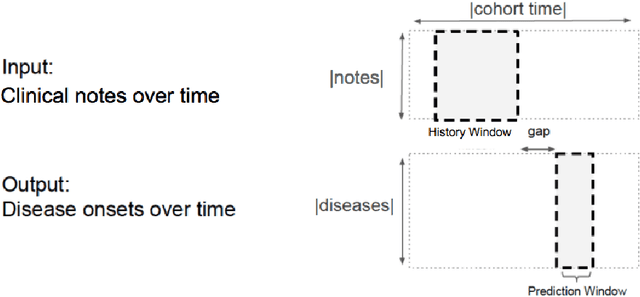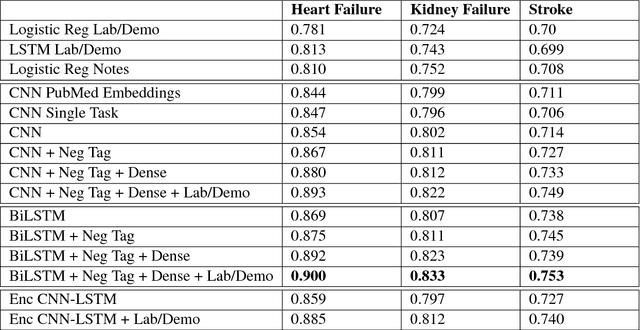Deep EHR: Chronic Disease Prediction Using Medical Notes
Paper and Code
Aug 15, 2018



Early detection of preventable diseases is important for better disease management, improved inter-ventions, and more efficient health-care resource allocation. Various machine learning approacheshave been developed to utilize information in Electronic Health Record (EHR) for this task. Majorityof previous attempts, however, focus on structured fields and lose the vast amount of information inthe unstructured notes. In this work we propose a general multi-task framework for disease onsetprediction that combines both free-text medical notes and structured information. We compareperformance of different deep learning architectures including CNN, LSTM and hierarchical models.In contrast to traditional text-based prediction models, our approach does not require disease specificfeature engineering, and can handle negations and numerical values that exist in the text. Ourresults on a cohort of about 1 million patients show that models using text outperform modelsusing just structured data, and that models capable of using numerical values and negations in thetext, in addition to the raw text, further improve performance. Additionally, we compare differentvisualization methods for medical professionals to interpret model predictions.
 Add to Chrome
Add to Chrome Add to Firefox
Add to Firefox Add to Edge
Add to Edge